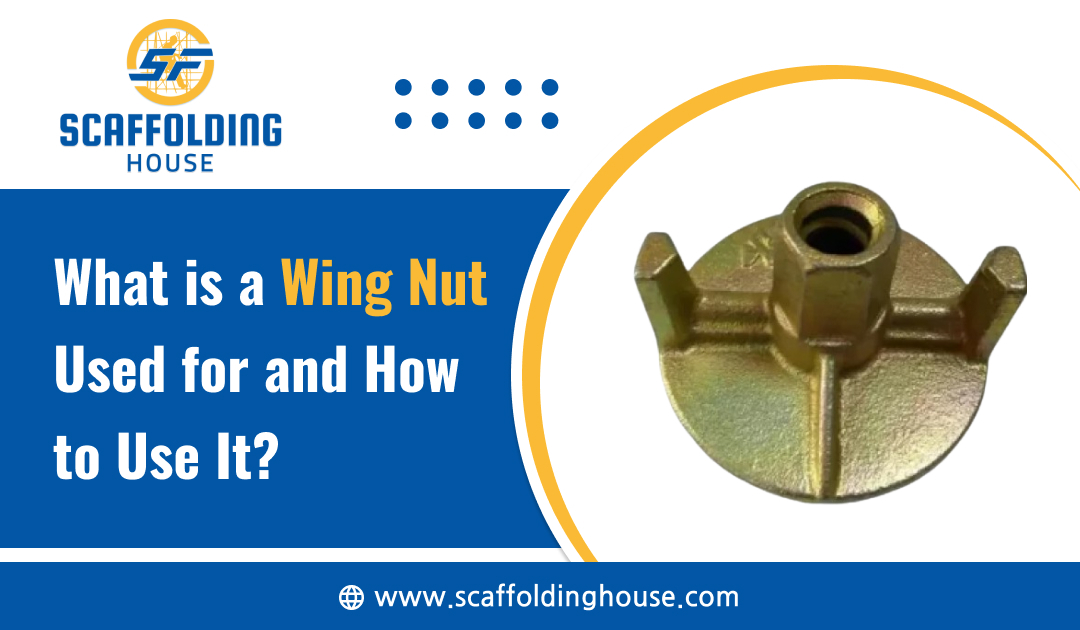
Nuts are among the most commonly used fasteners. A wing nut, also known as a butterfly nut, features two large metal wings that allow it to be tightened or loosened by hand. It is a metal piece with a threaded hole, typically used with a bolt or wing screw to secure two or more objects. To assemble, the bolt is passed through the objects, and the wing nut is then screwed onto the end of the bolt and tightened by hand.
What is a Wing Nut?
A wing nut is a fastener characterized by two tabs, or “wings,” on either side, enabling easy hand-tightening. These fasteners, also referred to as butterfly nuts or thumb nuts due to their butterfly-like appearance and thumb-friendly design, are typically made from metal. They are frequently used in situations requiring quick adjustments or regular disassembly, such as securing panels, clamping objects, or assembling furniture.
- When things need to be assembled and disassembled frequently without the use of tools, you should choose a wing nut.
- Wing nuts are most commonly used when it comes to furniture box sets.
- For automotive components that need frequent adjustments, then you can use wing nuts.
- They can be used in scaffolding material.
Why to Use a Wing Nut?
Wing nuts work similarly to other nuts, primarily serving to secure two or more objects when used with a bolt. Their main advantage is the ease of installation and removal. The wings on wing nuts allow for a better grip, making them easy to tighten by hand. Wingnuts feature protruding wings that extend from a round base with a flat bearing surface, positioned 180 degrees apart.
What is a Wing Nut also Called?
You can easily fasten parts using a wing nut. It is also called butterfly nuts. They have a pair of wings on the side. That’s why they are known as wing nuts. You can use these wings to install or remove wing nuts on threaded fasteners. You can determine the size of a wing nut by its thread diameter, which is generally a number or an inch measurement.
How Wing Nuts Work?
Wing nuts mostly work like other nuts. They are used to hold two or more workpieces together when you use wing nuts with a bolt. By twisting a wing nut onto the end of a bolt, you can prevent the attached workpiece from pulling away. Wing nut has internal threading that can run up and down the bolts with which they are used.
How to Use a Wing Nut?
Here’s how to use a wing nut:
- Clean the threads: Ensure the threads of the bolt, stud, or threaded rod are clean and free of debris.
- Place it on: Place the wing nut onto the threaded end of the bolt, with the wings facing outward.
- Tighten by hand: Grip the wings of the nut and turn it clockwise by hand until it is secure.
The wings of a wing nut make you able to easily install and remove a wing nut. Wing nuts are most commonly used in automotive workshops for securing parts during adjusting fixtures and repairs and their quick-release feature can be useful for tasks that need frequent adjustments. Most commonly, wing nuts are used in scaffolding work.
Benefits of Using Wing Nuts
- Wing nuts are useful hardware with various benefits. Some of these benefits include:
- You don’t need any tool to tighten or loosen the wing nut, which makes it suitable for fastening where adjustments are required frequently.
- These nuts can be accessible in tight spaces. You don’t need any tools to tighten or loosen them, so they are easy to use in narrow spaces.
- They are versatile.
- They are adjustable, which makes them suitable for applications where regular precision adjustments are needed.
- These wing nuts are user-friendly, and no special training is required.
Conclusion
If you are looking for wing nuts used in scaffolding material, you can contact Scaffolding House. We deal with wing nuts and other accessories used in scaffolding. You can also reach out to us to buy any scaffolding product.
